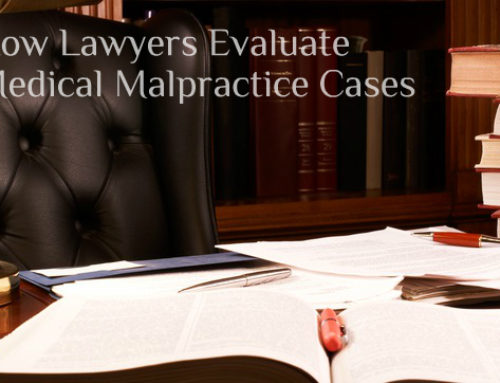Attorneys like to use the word “negligence” a lot. It’s a big deal, especially in personal injury law. However many people don’t know what negligence is, what it means, or how to identify it.
Definition of negligence

You can see negligence when a driver isn’t safe, when a manufacturer doesn’t test its product for safety, when a doctor fails to examine you but makes a prescription anyway, when a road is left damaged and puts drivers and bicyclists at risk, and so on.
When it comes to personal injury law, negligence is a “cause of action.” Proving that negligence happened requires several elements.
Elements of negligence
A successful lawsuit will prove negligence by showing the following:
1. A duty of care was owed. This means that the person causing the accident should have been behaving in a way that keeps others safe. A duty of care is a standard of behavior often established by law, for example: the law prohibits drunk driving. We are all responsible to keep that standard.
2. That duty was breached. This means that the person causing the accident didn’t perform up to the standards expected of them. For example, a teenager who texts and drives is breaching his duty of care to all other drivers.
3. The breach in behavior actually caused harm. For example, a doctor may have given bad medical advice, but if no harm was done, even though there was a breach in his duty of care, there is no standing for a lawsuit. For example, perhaps your doctor prescribed a placebo or an ineffective medication rather than fully examine you. This is a breach of trust, certainly, but if you weren’t injured by it there may be no recourse in personal injury law.
4. Proximate cause. This is often grouped with #3 on our list. Basically “proximate cause” means that you have to be able to show that any given injury is due to the misbehavior. For example, after a car accident a doctor can testify that injuries to spine and neck were caused by the car accident. However if you were already experiencing problems with your knees, it may not be possible to prove proximate cause in relation to knee pain. In cases with many factors, such as in medical malpractice, this can be extremely difficult.
5. Damages have to have occurred. In other words, if your injuries weren’t severe enough to warrant medical care, or if you didn’t have any costs associated with another’s breach of duty, you aren’t “damaged” and thus a personal injury lawsuit may not happen.
Other breaches of duty
Sometimes certain people or states require a unique standard in terms of what duty of care is required. For example, your attorney is required to keep all communication confidential. Your financial planner may have a fiduciary duty to give the recommendation that is financially best for you, not for him. Your doctor has a duty to give you the best medical care possible. Some states require you to try and help a person in danger. Whenever somebody fails to meet these special standards the professional may be liable for malpractice or even criminal charges.
Negligence basically means that because somebody didn’t uphold a reasonable standard of behavior somebody else got hurt. When that happens you have legal rights to fair compensation.












